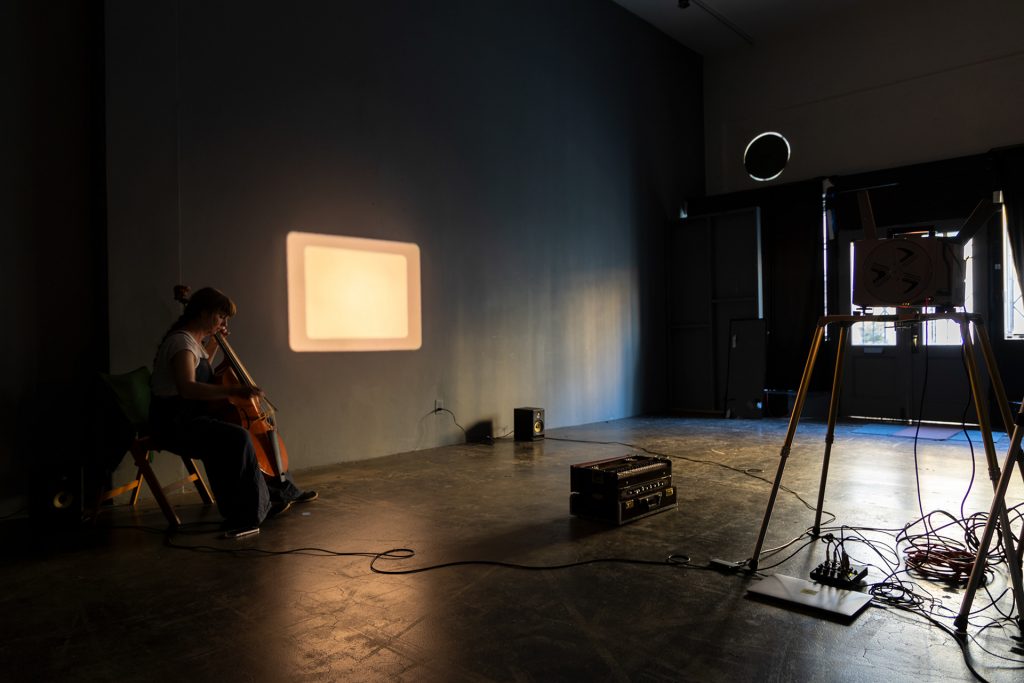The cinema department welcomed abstract filmmaker Saif Alsaegh, 33, of California, as he contrasted the life and landscape in Iraq and the United States during the 1990s. His viewings were a part of the Visiting Film & Video Artists & Speakers Series held in Lecture Hall 6 on Oct. 24.
Alsaegh attended film school at the University of Wisconsin-Milwaukee and uses his films to tell his fragmented and visual stories.
His work consisted of six short films, ranging between one to 21 minutes long, and took inspiration from poetry, surrealism and memories of his childhood. He explores the calm and disturbing manners of war through recreated landscapes of Iraq and California. The use of cross-cutting techniques was apparent in each video as Alsaegh flip-flopped scenes and sounds to convey the contrasting emotions of life during the war.
The first video, “Alazeef,” used simple visuals and poetic storytelling to portray the fears of an Iraqi soldier during a time of war. Alsaegh used a sandbox, toy figurines of soldiers and guns and printed pictures to portray the landscape of Iraq. A mix of Iraq-inspired and patriotic American music heavily influenced the contrasting scenes of the day-to-day reality soldiers faced versus the longing they had to visit America to escape the harsh reality of the war.
The second video, “Bezuna,” told the complications of fleeing one’s home country. The beginning dialogue listed items you shouldn’t pack as a split-screen of appealing visuals played side by side. The use of natural images of fish swimming together, a woman’s hand holding a cigarette and an animal lying down illustrated the peaceful feeling of moving away from war. Clips of a young child were also woven between scenes as natural sounds of water and the narrative of a woman’s childhood migration experience interchanged.
The third video, “Somewhere Nowhere,” uses a sped-up, first-person point of view of an immigrant strolling through the American suburbs. The peaceful music creates an eerie contrast to the disorienting trippy video.
The fourth video, “1991,” conveys the separation between a child and his mother after fleeing Iraq. The format of a recorded FaceTime call showed the mother and child reconnecting over the phone as he cooked a traditional dish. Alsaegh narrates the poor and deserted conditions his mother endured during her final stages of pregnancy in 1991 with few pauses, stimulating the audience to feel overwhelmed, a feeling similar to what his mother had experienced. However, the peaceful visuals of a cozy American cabin created a captivating difference.
“Bitter with a Shy Taste of Sweetness” contrasts the fragmented past of the filmmaker growing up in Baghdad with his surreal and current California lifestyle. Through poetic writing and jarring visuals, the film creates a calm and cruel sense of memory and landscape. “Bitter with a Shy Taste of Sweetness” opens with the drippings of coffee, a tradition in which mothers would tell their children their future based on the shapes formed. Alsaegh’s fragmented past was portrayed through the tilted screen — because although California was beautiful, it wasn’t his home. Green grass, blue seas and blonde hair, he describes, were noticeable features TV portrayed America as, as they weren’t available in Baghdad. The video contained little dialogue but utilized sounds of waves crashing, bells ringing and upbeat music through clips of California landscape.
The sixth and final video, “The Motherfucker’s Birthday,” took the audience back to Alsaegh’s home country Iraq. “It’s the motherfucker’s birthday, so the Iraqis must dance” was written in black letters behind a bright red screen. The comical title expressed the act of cursing out Iraqi dictator Saddam Hussein. Terrifying scenes of guns being shot and Iraqis dancing showed as the use of muffled noise created an uncanny feeling. Gentle music played as people were shown getting beat by soldiers. The audio ranged from old news broadcasts, muffled noises and upbeat music. “Sweet Caroline” played as soldiers were shown holding hands and dancing.
“A lot of what is shown on the screen is to try to visually convey a place —Iraq — where I can no longer visit,” Alsaegh wrote in an email. “So limitations of options always help me with my artistic vision for these works, for instance, how to talk about a place you can no longer see, how to share things, you can no longer touch or experience.”



